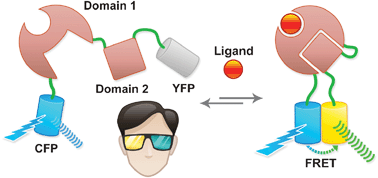Abstract
Fluorescent

- This article is part of the themed collection: Green Fluorescent Protein
* Corresponding authors
a
Carnegie Institution for Science, 260 Panama St., Stanford, CA 94305, USA
E-mail:
wfrommer@stanford.edu
Tel: +1 650-325-1521 ext. 208
b
National High Magnetic Field Laboratory and Department of Biological Science, The Florida State University, 1800 E. Paul Dirac Drive, Tallahassee, Florida 32310, USA
E-mail:
davidson@magnet.fsu.edu
Tel: +1 850-644-0542
c
Department of Chemistry, University of Alberta, 11227 Saskatchewan Drive, Edmonton, Alberta, Canada
E-mail:
robert.e.campbell@ualberta.ca
Tel: +1 780-492-1849
Fluorescent

 Please wait while we load your content...
Something went wrong. Try again?
Please wait while we load your content...
Something went wrong. Try again?
W. B. Frommer, M. W. Davidson and R. E. Campbell, Chem. Soc. Rev., 2009, 38, 2833 DOI: 10.1039/B907749A
To request permission to reproduce material from this article, please go to the Copyright Clearance Center request page.
If you are an author contributing to an RSC publication, you do not need to request permission provided correct acknowledgement is given.
If you are the author of this article, you do not need to request permission to reproduce figures and diagrams provided correct acknowledgement is given. If you want to reproduce the whole article in a third-party publication (excluding your thesis/dissertation for which permission is not required) please go to the Copyright Clearance Center request page.
Read more about how to correctly acknowledge RSC content.
 Fetching data from CrossRef.
Fetching data from CrossRef.
This may take some time to load.
Loading related content
